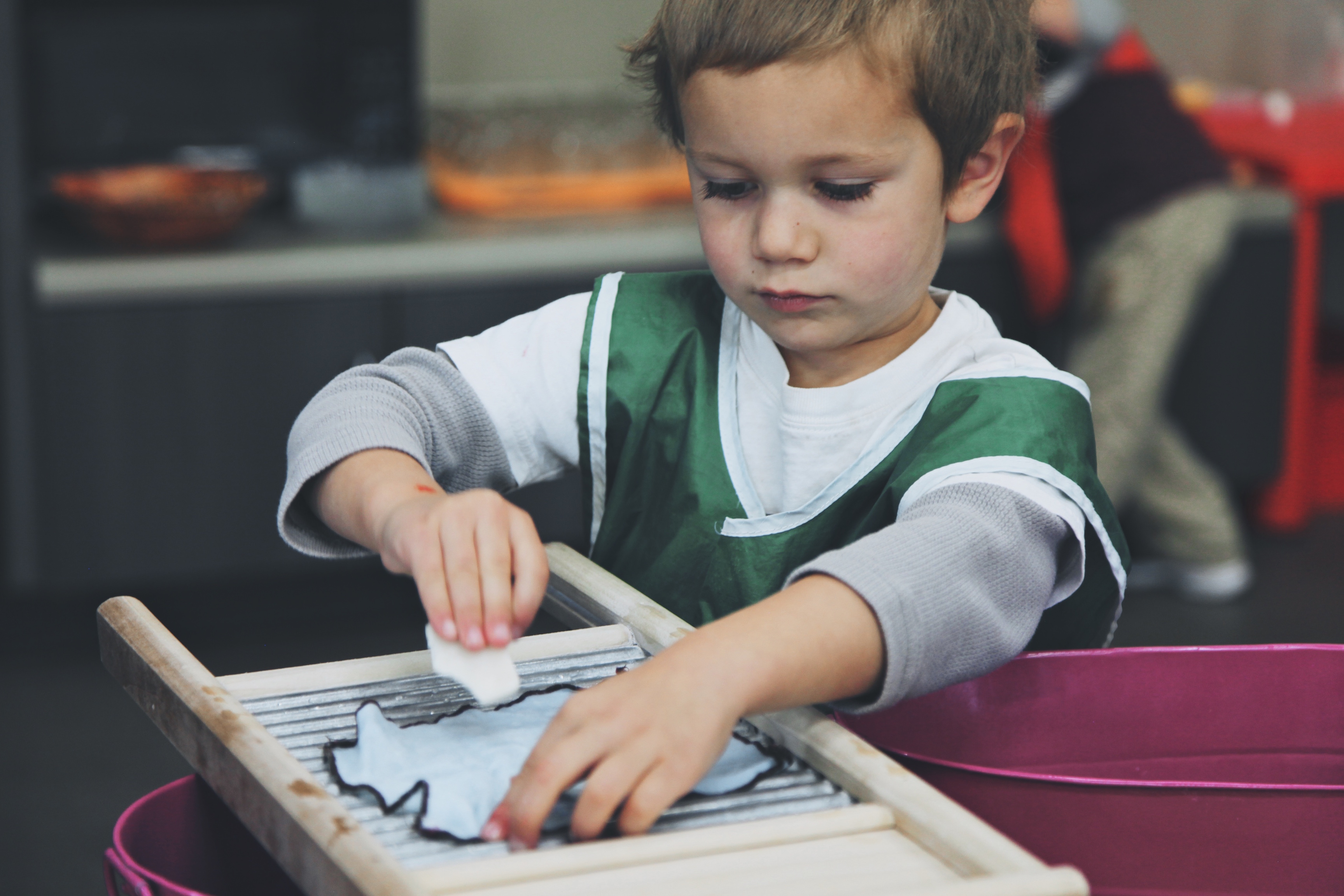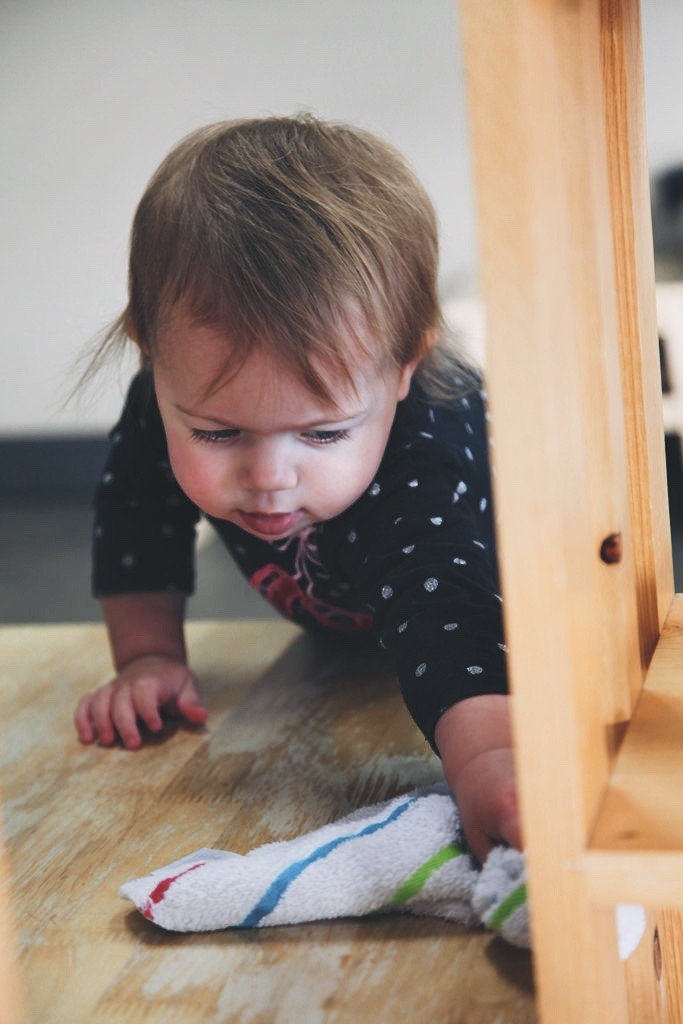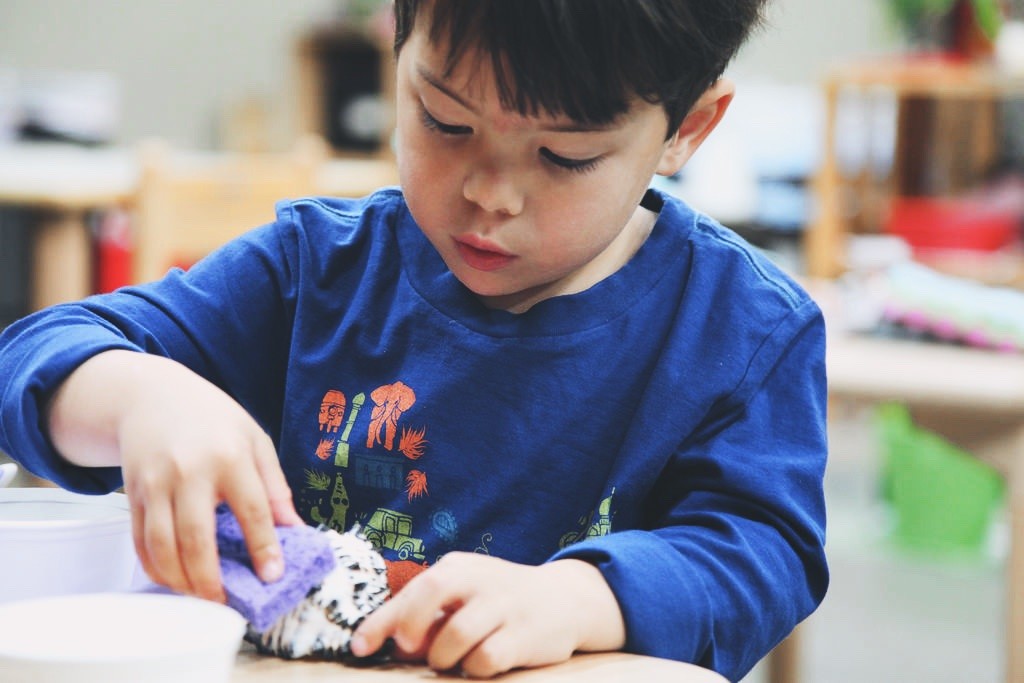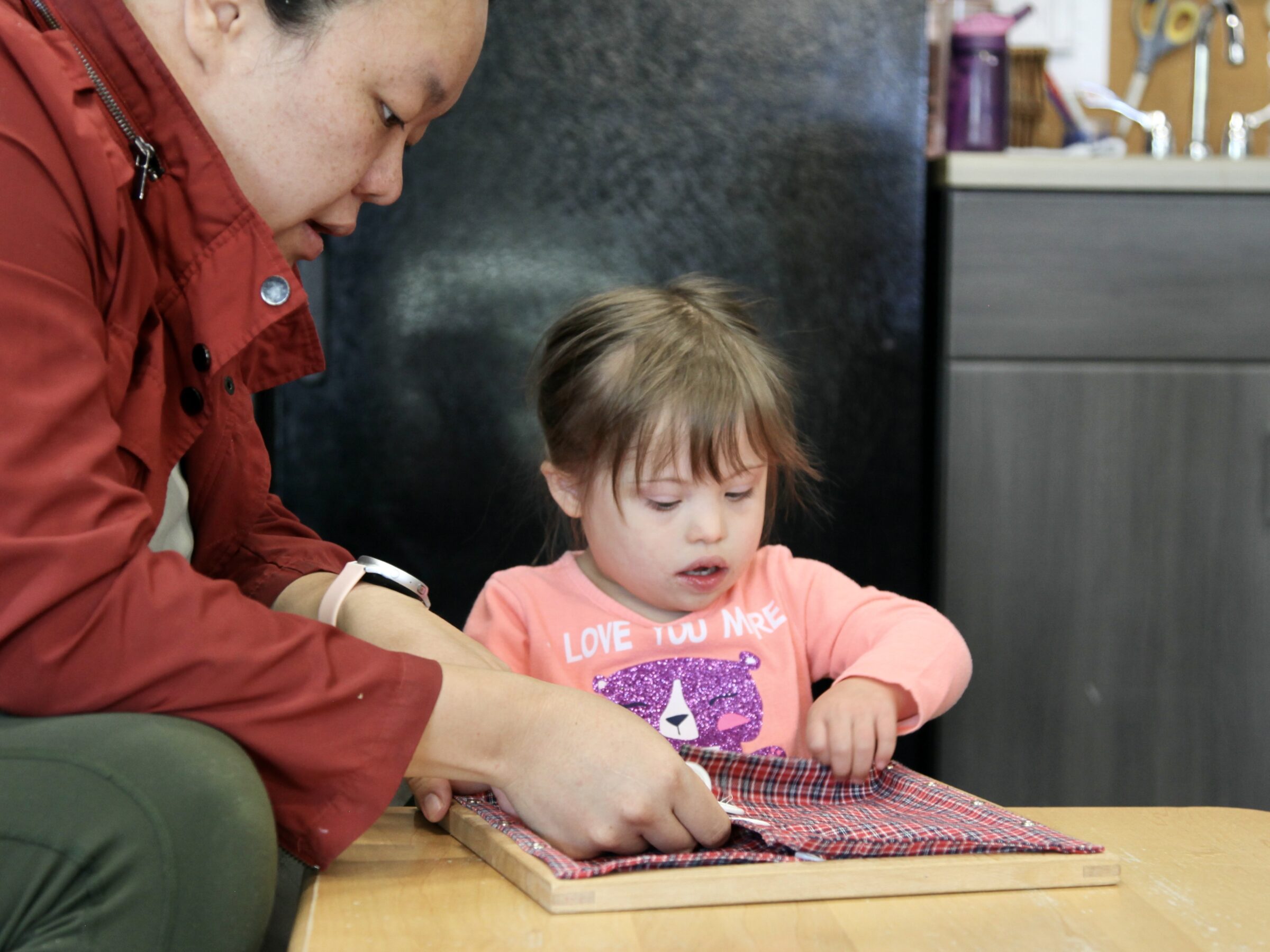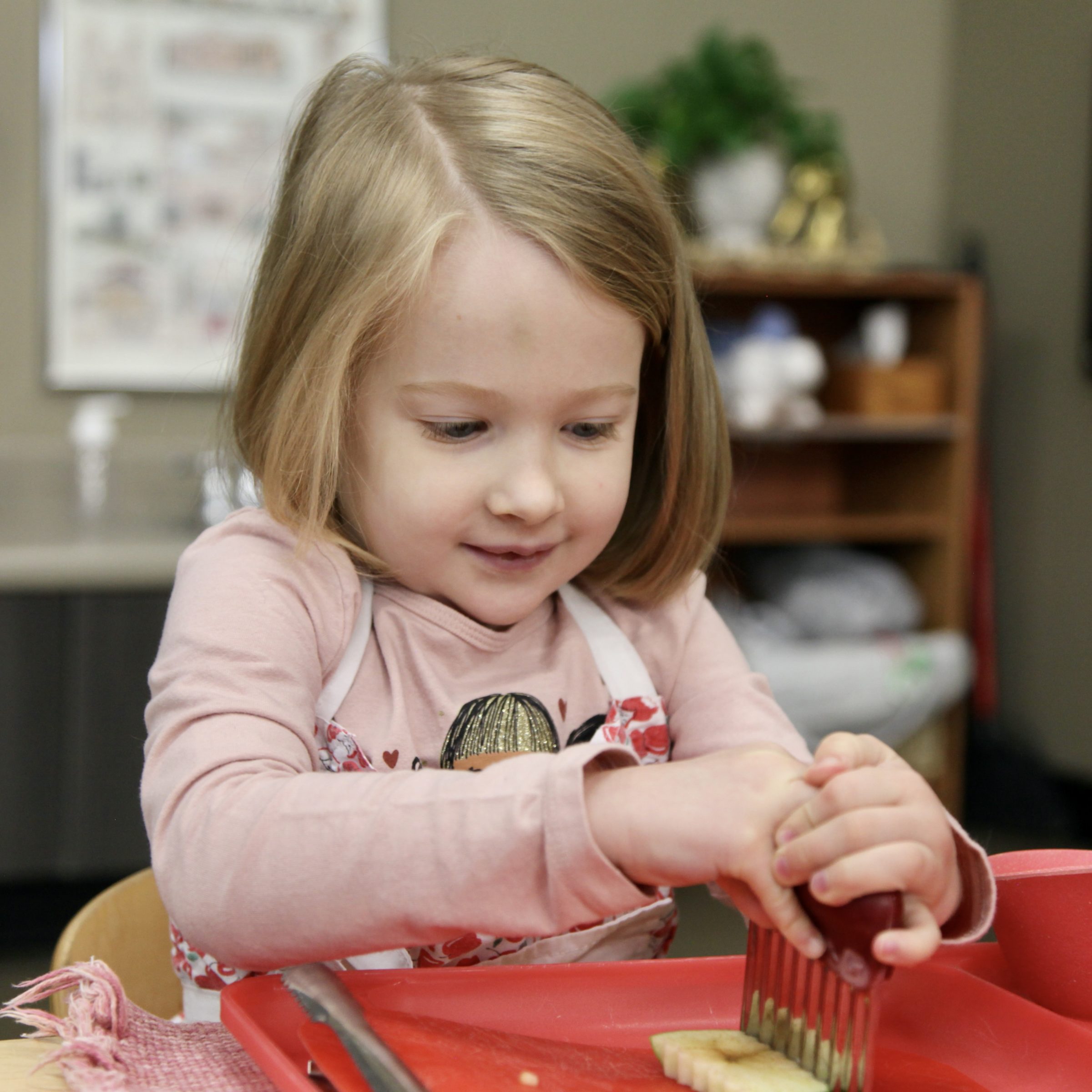Developing Independence
Thoughts & Reflections
Last Saturday, we had our first Parent Education workshop of the year. Our theme was Independence. We’d like to go deeper into what we mean when we say “independence,” as well as discussing some of the ways we can work together to help children develop independence at home in their first six years.
In Montessori philosophy, every six years to age 24 an individual is working to develop a different kind of independence. Their first six years, children are working Functional Independence, the ability to meet their own needs without being a hinderance to others. This is highlighted in the many achievements of a child’s earliest years — walking, talking, toileting, feeding. There are many ways the Montessori classroom helps further the path toward independence, and we thought you might be interested in implementing some of these at home.
From their earliest days, a child is moving. Even an infant explores her environment by looking around, kicking, and reaching at things. A toddler explores everything, grasping at objects, throwing them, putting them in her mouth. A young child learns through the hand; as Maria Montessori stated, “The hand is the instrument of the mind.”
Providing a space that grows with the child to meet their needs will help a child to become independent in their movement. A blanket in a safe place on the floor provides a clean, soft environment for an infant to lie on her back, stretch, and explore her home. She has space to wiggle and to roll over, crawl, and sit up, as she is able. Any container which artificially props a child up or restrains them can limit their ability to move. Sometimes this is necessary, such as in the car, or using a stroller while running errands. When it isn’t necessary, though, it can be helpful to your child to be free to move and explore their environment safely.
Your child’s room can be set up for them to be an active member of their care. Having clothing stored where your child can reach it allows for them to help to change themselves in the morning and evening, and any time they might get messy. Providing small shelves for a child to place their toys, rather than a bin, means they can find what they want when they want it, as well as being clear with where it can be returned when your child is done using it. With a clear space to return a toy when finished playing, there is a higher likelihood your child will tidy up after herself.

Language development is one of the ways a baby learns to be a person of this time and place. Children learn very quickly that if they ask for what they want, they are much more likely to get it, and this is a huge motivator, once language starts developing. Infants will mimic mouth movements, and there is no limit to the language children can acquire in their first 6 years.
Even from their earliest days, babies are mimicking the sounds and mouth movements of adults around them. Baby talk and the babbling a baby does are important in the development of strong language skills. A child can acquire as many languages as they are exposed to at this young age, which is fantastic news for multilingual families or families hoping to introduce another language.
We recommend that you talk to your child. Talk about what you’re doing, how you’re feeling. Conversations are the basis for relationships, and your child will learn so much more than language when seeing and being included in conversations. Though baby talk is natural and important for later language development, modeling language should grow with your child as she does. As she starts to make connections and understand what you’re saying, begin to use larger phrases, more complicated vocabulary, and common syntax and grammar. Her brain is working to form connections, using logic and contextual clues to deduce meaning. Everything is new to her; don’t be afraid of using words that you fear are “above her head.” When your child is speaking, if you’re asking for clarification, model appropriate language when responding. She will learn tenses, pronouns, and syntax if you are using them around her.
Self-Discipline is not necessarily something we attribute with young children, but is in fact necessary to their success, and certainly within their capacity. We see this in the Montessori classroom with our youngest children, who might run like the wind outside, but who take ten minutes to walk across the room with a pitcher full of water, and then return along that same path with a cloth to clean up any spills. We see this when a child waits patiently for their turn to use the bathroom or to have snack, because it’s not available for them yet. We see this when a five year old struggles to read a book, but sticks with it, because they know they are capable of achieving challenging things.
“ …they know they are capable of achieving challenging things. ”
Children will emulate self-discipline as it is presented to them, and as they have opportunities to practice. All children spill, not all children are allowed or encouraged to help clean up the spill. At first, having your child help to clean up the spill will be less than helpful. What might have been for you a ten second fix might turn into a ten minute ordeal. Your child is developing self-confidence, learning what works and what doesn’t, growing tenacity. Though now their help might take longer, soon, the same spill will require no help at all. Providing opportunities for your child to participate in family life, and encouraging their efforts, will help develop strong, self-confident, disciplined individuals. Helping to transfer laundry from the washer to the dryer will grow into helping to fold and to put away laundry, and eventually, completing this task start to finish by herself. Setting the table is a reasonable contribution at age two or three, a four-year-old can help to shop for and prepare dinner, a six-year-old might plan and prepare a nutritious meal for the family. This all stems from self-discipline — the idea that you are capable of something great, and that you have the desire and ability to see it through.
These are three ways you can help your child grow into their independence at home. There are countless other ways that might be unique to your child, and you know your child best. Finding opportunities for your child to stretch her wings, to try things she never thought herself capable, to find connections in her world, will not only support her growing independence, but also her self-confidence, her tenacity, her grit. Thank you!
Written by:
Charlotte Snyder
